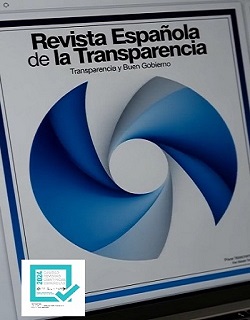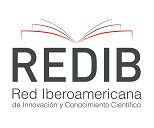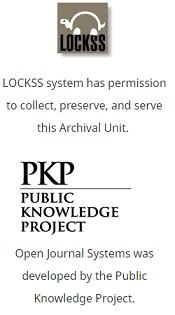Transparent Governance in the Algorithmic Age: A Comparative Analysis of Systems and the Application of an Evaluative Framework to BOSCO
DOI:
https://doi.org/10.51915/ret.379Keywords:
Algorithmic transparency, public governance, artificial intelligence, accountability, ethicsAbstract
In the context of the increasing use of algorithms in public governance, this paper examines the challenges of algorithmic transparency through a dual approach. First, it presents a comparative analysis of three emblematic automated decision-making systems used in public administration—COMPAS, SyRI, and SALER—to identify common patterns of opacity, bias, and lack of oversight. Second, it designs, applies, and validates a comprehensive evaluative framework focused on the principles of explainability, accessibility, human supervision, and fairness, which is empirically tested on BOSCO, an algorithm used in Spain to allocate the social electricity subsidy. Methodologically, the study combines a systematic literature review, a comparative case study analysis, and expert validation through a Delphi panel. The findings reveal structural deficiencies in BOSCO's transparency, particularly regarding technical accessibility and accountability, highlighting the limitations of current regulatory frameworks. The article concludes by proposing a replicable evaluation model that enables public administrations to effectively audit the transparency of algorithmic systems, thereby reinforcing democratic governance in the digital era.
Downloads
Global Statistics ℹ️
|
0
Views
|
0
Downloads
|
|
0
Total
|
|
References
AMONI REVERÓN, G. A. (2021). Derechos ante decisiones judiciales y administrativas algorítmicas reconocidos en los casos CADA, Loomis, Lazio y SyRI. Revista Administración y Ciudadanía, 125–142. https://doi.org/10.36402/ac.v16i2.4803
ANGWIN, J., LARSON, J., MATTU, S., & KIRCHNER, L. (2016). Machine Bias: There´s software used across the country to predict future criminals. And it`s biased agaisnst blacks. ProPublica. https://www.propublica.org/article/machine-bias-risk-assessments-in-criminal-sentencing
ANSGAR, K., CHRIS, C., YOHKO, H., HELENA, W., & RASHIDA, R. (2019). A governance framework for algorithmic accountability and transparency. European Parliament Think Tank. https://doi.org/10.2861/59990
ASHISH, S. (2024). AI in governance and policy making. International Journal of Science and Research (USR). https://doi.org/10.21275/sr24519015426
BEKKER, S. (2021). Fundamental rights in digital welfare states: The case of SyRI in the Netherlands. In O.spijkers, W. G. Werner, & R. A. Wessel (Eds), Netherlands Yearbook of International Law 2019 (Vol. 50, pp 289-307). T.M.C. Asser Press. https://doi.org/10.1007/978-94-6265-403-7_24
BOIX PALOP, A. (2020). Los algoritmos son reglamentos: La necesidad de extender las garantías propias de las normas reglamentarias a los programas empleados por la administración para la adopción de decisiones. Revista de Derecho Público: Teoría y Método, (1), 223–270. https://doi.org/10.37417/RPD/vol_1_2020_33
CERRILLO I MARTÍNEZ, A. (2020). ¿Son fiables las decisiones de las Administraciones públicas adoptadas por algoritmos? European Review of Digital Administration & Law, 1 (1-2), 18-36 https://www.erdalreview.eu/free-download/97888255389603.pdf
CHAUDHARY, G. (2024). Unveiling the black box: Bringing algorithmic transparency to AI. Masaryk University Journal of Law and Technology,18 (1), 93-116. https://doi.org/10.5817/mujlt2024-1-4
CHEONG, B. C. (2024). Transparency and accountability in AI systems: Safeguarding wellbeing in the age of algorithmic decision-making. Frontiers in Human Dynamics, 6, Article 1421273. https://doi.org/10.3389/fhumd.2024.1421273
COGLIANESE, C., & LEHR, D. (2019). Transparency and algorithmic governance. Administrative Law Review, Vol 71, P.1, 2019, U of Penn Law School Public Law Research Paper Nº18-38, available at 38, Available at SSRN: https://ssrn.com/abstract=3293008
COMISIÓN EUROPEA. (2021). Propuesta de Reglamento del Parlamento Europeo y del Consejo por el que se establecen normas armonizadas en materia de inteligencia artificial (Ley de Inteligencia Artificial) y se modifican determinados actos legislativos de la Unión. https://eur-lex.europa.eu/legal-content/ES/TXT/?uri=CELEX%3A52021PC0206
CRIADO, J. I., VALERO, J., & VILLODRE, J. (2020). Algorithmic transparency and bureaucratic discretion: The case of SALER early warning system. Information Polity 25, 449–470. https://doi.org/10.3233/IP-200260
DATTA, A., SEN, S., & ZICK, Y. (2017). Algorithmic transparency via quantitative input influence: Theory and experiments with learning systems. En Proceedings of the IEEE Symposium on Security and Privacy.598–617. https://doi.org/10.1109/SP.2016.42
DE MIGUEL BERIAIN, I. (2018). Does the use of risk assessments in sentences respect the right to due process? A critical analysis of the Wisconsin v. Loomis ruling. Law, Probability and Risk, 17(1), 45–53. https://doi.org/10.1093/lpr/mgy001
FREEMAN, K. (2016). Algorithmic injustice: How the Wisconsin Supreme Court failed to protect due process rights in State v. Loomis. North Carolina Journal of Law & Technology, 18(5), 75–106. https://scholarship.law.unc.edu/ncjolt/vol18/iss5/3/
GIL GONZÁLEZ, E. (2017). Aproximación al estudio de las decisiones automatizadas en el seno del Reglamento General Europeo de Protección de Datos a la luz de las tecnologías big data y aprendizaje computacional. Revista Española de la Transparencia, (5), 165–179. https://dialnet.unirioja.es/servlet/articulo?codigo=6312525
GOBIERNO DE ESPAÑA. (2017). Real Decreto 897/2017, de 6 de octubre, por el que se regula la figura del consumidor vulnerable, el bono social y otras medidas de protección para los consumidores domésticos de energía eléctrica. https://www.boe.es/buscar/act.php?id=BOE-A-2017-11505
GOVERNMENT OF CANADA. (2021). Algorithmic Impact Assessment: A tool for analyzing and mitigating the risks associated with automated decision systems. https://canada-ca.github.io/aia-eia-js/
GUTIÉRREZ DAVID, M. E. (2021). Administraciones inteligentes y acceso al código fuente y algoritmos públicos: Conjurando riesgos de cajas negras decisionales. Derecom: Revista Internacional de Derecho de la Comunicación y de las Nuevas Tecnologías, (30), 143-228. Recuperado de https://dialnet.unirioja.es/servlet/articulo?codigo=7980499
HUERGO LORA, A. (2024). ¿Por qué aciertan las sentencias sobre el algoritmo del bono social eléctrico? Almacén de Derecho. https://almacendederecho.org/por-que-aciertan-las-sentencias-sobre-el-algoritmo-del-bono-social-electrico
JACKSON, E., & MENDOZA, C. (2020). Setting the record straight: What the COMPAS core risk and need assessment is and is not. Harvard Data Science Review, 2(1),3 https://doi.org/10.1162/99608f92.1b3dadaa
JIMÉNEZ SERRANÍA, V., CASTILLA BAREA, M., & DELGADO MARTÍN, J. (2024). El Reglamento Europeo de Inteligencia Artificial. (M. BARRIO ANDRÉS, Dir). Valencia, España: Editorial: Tirant lo Blanch.
KANELLOPOULOS, Y. (2018). A model for evaluating algorithmic systems accountability. arXiv.org. https://doi.org/10.48550/arXiv.1807.06083
LAZCOZ MORATINOS, G., & CASTILLO PARRILLA, J. A. (2020). Valoración algorítmica ante los derechos humanos y el Reglamento General de Protección de Datos. El caso SyRI. Revista Chilena de Derecho y Tecnología, 9(1), 207–225. https://doi.org/10.5354/0719-2584.2020.56843
MIRI, Z., SARGEANT, H., & WELLER, A. (2022). Transparency, governance and regulation of algorithmic tools deployed in the criminal justice system. A UK case study. In Proccedings of the 2022 AAAI/ACM Conference on AI, Ethnics, and Society (AIES`22) Association for Computing Machinery. https://doi.org/10.1145/3514094.3534200
PAGE, M. J., MCKENZIE, J. E., BOSSUYT, P. M., ... & MOHER, D. (2021). The PRISMA 2020 statement: An updated guideline for reporting systematic reviews. BMJ, 372, n71. https://doi.org/10.1136/bmj.n71
PALMA ORTIGOSA, A. (2019). Decisiones automatizadas en el RGPD. El uso de algoritmos en el contexto de la protección de datos. Revista General de Derecho Administrativo, (50). https://dialnet.unirioja.es/servlet/articulo?codigo=6823524
PASQUALE, F. (2015). The Black Box Society: The secret algorithms that control money and information. Harvard University Press. https://doi.org/10.4159/harvard.9780674736061
PONCE SOLÉ, J. (2024). ¿Por qué se equivocan las sentencias sobre el algoritmo del bono social eléctrico? Almacén de Derecho. https://almacendederecho.org/por-que-se-equivocan-las-sentencias-sobre-el-algoritmo-del-bono-social-electrico
PUNCEL CHORNET, A. (2019). Inteligencia artificial para la transparencia pública: el sistema de alertas tempranas (SALER) de la Generalitat Valenciana. Boletín Económico de ICE, (3116), 41–61. https://doi.org/10.32796/bice.2019.3116.6914
RACHOVITSA, A., & JOHANN, N. (2022). The human rights implications of the Use of AI in the digital welfare state: Lessons learned from the Dutch SyRI Case. Human Rights Law Review. https://doi.org/10.1093/hrlr/ngac010
SHEA, B. J., GRIMSHAW, J. M., WELLS, G. A., ... & BOUTER, L. M. (2007). Development of AMSTAR: A measurement tool to assess the methodological quality of systematic reviews. BMC Medical Research Methodology, 7(1), 10. https://doi.org/10.1186/1471-2288-7-10
SINGH, D., KUMAR, I., NIJHAWAN, G., & GEETHA, B. T. (2024). Ensuring transparency and fairness in AI decision-making processes influenced by large language models. En Proceedings of the 2024 IEEE International Conference on Communication Systems and Network Technologies (CSNT) (pp. 987–996). IEEE. https://doi.org/10.1109/CSNT60213.2024.10545998
SORIANO ARNANZ, A. (2021). Decisiones automatizadas: problemas y soluciones jurídicas. Más allá de la protección de datos. Revista de Derecho Público: Teoría y Método, (3), 85–127. https://doi.org/10.37417/RPD/vol_3_2021_535
TOBIAS, P., BITZER, M., WIENER, M., & CRAM, A. (2023). Algorithmic transparency: Concepts, antecedents and consequences a review and research framework. Communications of the Association for Information Systems, 52 293-331 331. https://doi.org/10.17705/1CAIS.05214
VALERO TORRIJOS, J. (2019). Las garantías jurídicas de la inteligencia artificial en la actividad administrativa desde la perspectiva de la buena administración. Revista Catalana de Dret Públic, (58), 82–96. https://doi.org/10.2436/rcdp.i58.2019.3307
VELASCO RICO, C. I. (2024). Implementación de sistemas algorítmicos en el sector público, preferencias ciudadanas y obligaciones de transparencia a la luz del Reglamento de IA de la Unión Europea. En A. Cerrillo i Martínez, F. Di Lascio, I. Martín Delgado, & C.I Velasco Rico (Dirs,), Inteligencia artificial y administraciones públicas: una tiple visión en clave comparada (pp.47-70). Iustel. https://dialnet.unirioja.es/servlet/articulo?codigo=9830938
Downloads
Published
How to Cite
Issue
Section
License
Copyright (c) 2025 Spanish Journal of Transparency

This work is licensed under a Creative Commons Attribution-ShareAlike 4.0 International License.
The Spanish Journal of Transparency is committed to free access and unrestricted use of its information and digital resources. The open access policy is materialized in:
- Free, free and universal access.
- The authors and the Journal grant any potential user the right to use, copy or distribute the content in an unlimited and irrevocable manner, with the sole condition of recognizing the authorship.
- The electronic documents corresponding to the content of the Journal are included in digital format to allow free access.

















